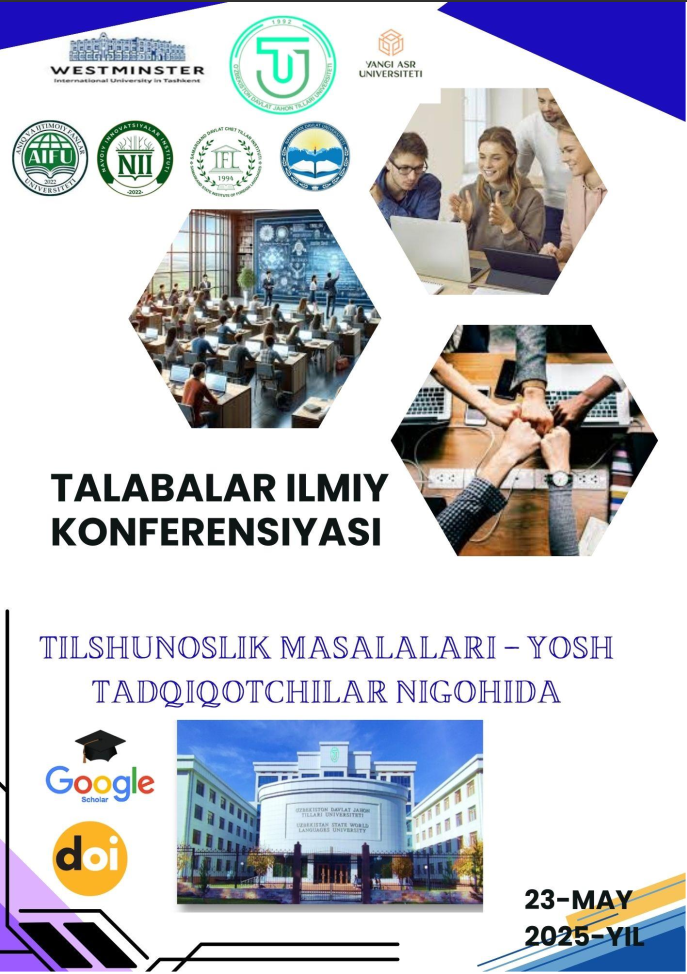SYNCHRONOUS VS. ASYNCHRONOUS TOOLS IN VIRTUAL EFL TEACHING
https://doi.org/10.5281/zenodo.15504922
Kalit so‘zlar
synchronous, asynchronous, covid-19, learning models, platforms, e-learning.Annotasiya
Due to the COVID-19 pandemic, education shifted to online formats, with governments promoting synchronous and asynchronous teaching methods. Students were required to learn from home, making their feedback on e-learning crucial. Research involving student participants provided insights into their experiences, while teachers chose teaching methods based on their judgment. This article reviews 20 relevant studies (from an initial 50) comparing both e-learning methods using tools like questionnaires and tests. Findings suggest that combining synchronous and asynchronous approaches can lead to more effective learning outcomes.
Foydalanilgan adabiyotlar ro‘yhati
Amiti, F. (2020). Synchronous and asynchronous E-learning. European Journal of Open Education and E-Learning Studies, 5(2).
Fernandez, C. J., Ramesh, R., & Manivannan, A. S. R. (2022). Synchronous learning and asynchronous learning during COVID-19 pandemic: a case study in India. Asian Association of Open Universities Journal, 17(1), 1-14.
Kayalar, M. T. (2021). Perspectives of University Students on the Efficiency of Synchronous and Asynchronous Learning. Journal of Educational Leadership and Policy Studies.
Khakimova S.D. A linguoculturological comparison of color-imagery-based phraseological units in English and Uzbek. Science and Education in Karakalpakstan. 2025 №2/1 ISSN 2181-9203
Parslow, G. R. (2012). Commentary: synchronous and asynchronous learning. Biochemistry and Molecular Biology Education, 40(3), 212. ching to supplement the remote teaching.
Rashidova, G., & Komilova, R. (2024). THE IMPORTANCE OF PRONUNCIATION IN SECOND LANGUAGE LEARNING. Modern Scientific Research International Scientific Journal, 3(1), 53-58.
Kholbutayeva, S., & Gulshoda, R. (2025). PSYCHOLOGICAL FOUNDATIONS AND PEDAGOGICAL APPROACHES: EFFECTIVE WAYS TO FOSTER STUDENT DEVELOPMENT IN EDUCATION. TA’LIM, TARBIYA VA INNOVATSIYALAR JURNALI, 1(5), 43-47.
Abulkosimovna, E. Z. (2022). Synonymous analysis of professional words in English and Uzbek. Frontline Social Sciences and History Journal, 2(05), 15-22.
Sultonova, M. (2024, October). Features of Critical Thinking Skills for B1 Level Learners. In Conference Proceedings: Fostering Your Research Spirit (pp. 786-790).
Gulomova, R. (2023). EVOLUTIONARY HISTORY OF CURSING. Journal of Advanced Scientific Research (ISSN: 0976-9595), 3(12).
Kasimkhodjayeva, M. (2024). Scientific ethics and etiquette of uzbek students in writing. O ‘zbekiston davlat jahon tillari universiteti konferensiyalari, 613-619.

